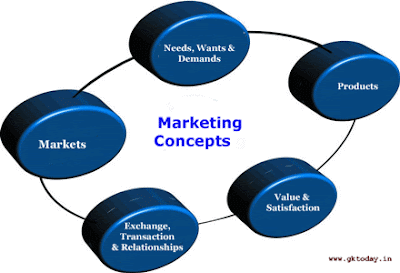Summarized Simple Marketing abstraction

1.1 Consumer behavior
Aspirational age[/i][/i]
Aspirational age is a concept from advertising and marketing, and refers to an ideal age whose characteristics consumers aspire to embody. Thus, marketing messages aimed at that target age will resonate with consumers of other ages. It is said that the aspirational age in Western society is 16 or 17, the cusp between childhood and adulthood. In theory, consumers younger than this age aspire to the maturity and freedom it signifies, while those older than it seek to recapture the (real or imagined) youthfulness and freedom from responsibility of this age. Thus, products pitched at notional 16-year-olds will appeal to a broader target market.
Aspirational Brand[/i][/i]
An aspirational product implies certain positive characteristics to the user, but the supply appears limited due to limited production quantities. An important characteristic of an aspirational product is that the part of its exposure audience that is at present economically unable to purchase it, thinks of itself as having a fair probability of at a certain point in the future being able to do so. This part of the exposure audience is referred to as the aspirational audience, whereas the part of the exposure audience that already can afford the product is called the consumption audience. Consumption audience and aspirational audience together form the aspirational product's target audience, which typically represents 30%-60% of the exposure audience
Buyer decision processes[/i][/i]
Decision making is the cognitive process of selecting a course of action from among multiple alternatives. Common examples include shopping and deciding what to eat. Decision making is said to be a psychological construct. This means that although we can never "see" a decision, we can infer from observable behaviour that a decision has been made. Therefore we conclude that a psychological event that we call "decision making" has occurred. It is a construction that imputes commitment to action. That is, based on observable actions, we assume that people have made a commitment to effect the action.
Choice Modeling[/i][/i]
Choice modelling attempts to model the decision process of an individual or segment in a particular context. Choice modelling may also be used to estimate non-market environmental benefits and costs. Choice Models are able to predict with great accuracy how individuals would react in a particular situation. Unlike a poll or a survey, predictions are able to be made over large numbers of scenarios within a context, to the order of many trillions of possible scenarios.
Demographics[/i][/i]
These types of data are used widely in sociology, public policy, and marketing. Commonly used demographics include gender, race, age, income, disabilities, mobility, educational attainment, home ownership, employment status, and even location. Demographic trends describe the changes in demographics in a population over time. Both distributions and trends of values within a demographic variable are of interest.
1.2 Direct marketing
Direct marketing is a form of advertising that reaches its audience without using traditional formal channels of advertising, such as TV, newspapers or radio. Businesses communicate straight to the consumer with advertising techniques such as fliers, catalogue distribution, promotional letters, and street advertising.
Direct Advertising is a sub-discipline and type of marketing. There are two main definitional characteristics which distinguish it from other types of marketing. The first is that it sends its message directly to consumers, without the use of intervening commercial communication media. The second characteristic is the core principle of successful Advertising driving a specific "call to action." This aspect of direct marketing involves an emphasis on trackable, measurable, positive responses from consumers (known simply as "response" in the industry) regardless of medium.
If the advertisement asks the prospect to take a specific action, for instance call a free phone number or visit a Web site, then the effort is considered to be direct response advertising.
1.3 Distribution
Distribution is also a very important component of Logistics & Supply chain management. Distribution in supply chain management means the distribution of good from one business to other it can be factory to supplier, supplier to retailer or retailer to the end customer. It is defined as a chain of intermediaries, each passing the product down the chain to the next organization, before it finally reaches the consumer or end-user. This process is known as the 'distribution chain' or the 'channel.' Each of the elements in these chains will have their own specific needs, which the producer must take into account, along with those of the all-important end-user.
1.3.1 Retail outlets
Shops may be on residential streets, shopping streets with few or no houses or in a shopping mall. Shopping streets may be for pedestrians only. Sometimes a shopping street has a partial or full roof to protect customers from precipitation. Online retailing, a type of electronic commerce used for business-to-consumer (B2C) transactions and mail order, are forms of non-shop retailing. Shopping generally refers to the act of buying products. Sometimes this is done to obtain necessities such as food and clothing; sometimes it is done as a recreational activity. Recreational shopping often involves window shopping (just looking, not buying) and browsing and does not always result in a purchase
1.5.2 Industry or market research
Industry or market research is the acquisition of corporate intelligence on a broad range of issues including:
Microenvironment
Economy
Government
Law
Technology
Ecological
Market analysis and competitor analysis
Market definition
Market size
Market segmentation
Industry structure and strategic groupings
Porter 5 forces analysis
Supply chain
Competition and market share
Competitors' strengths and weaknesses
Market trends
Consumer analysis or marketing research
Nature of the buying decision
Participants
Demographics
Psychographics
Buyer motivation and expectations
Loyalty segments
